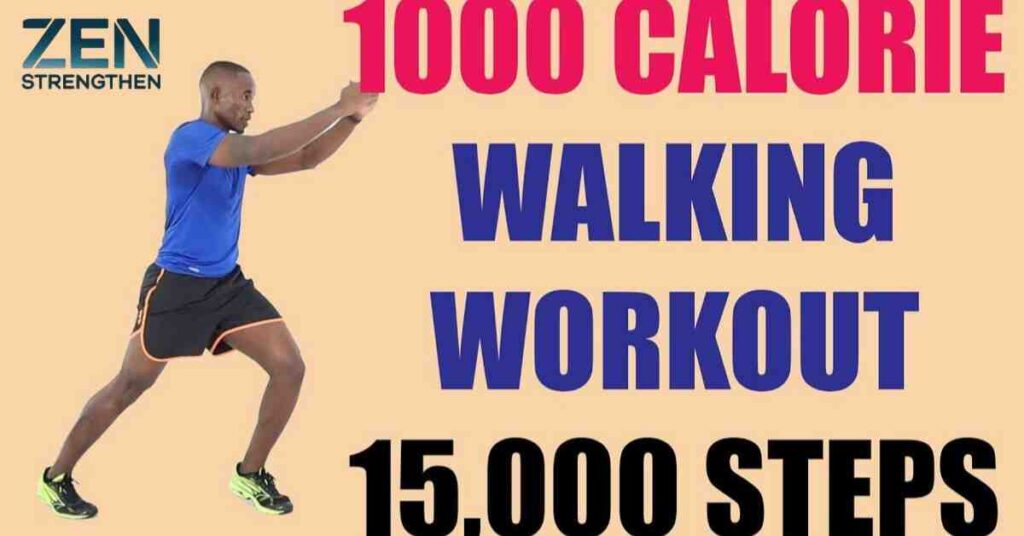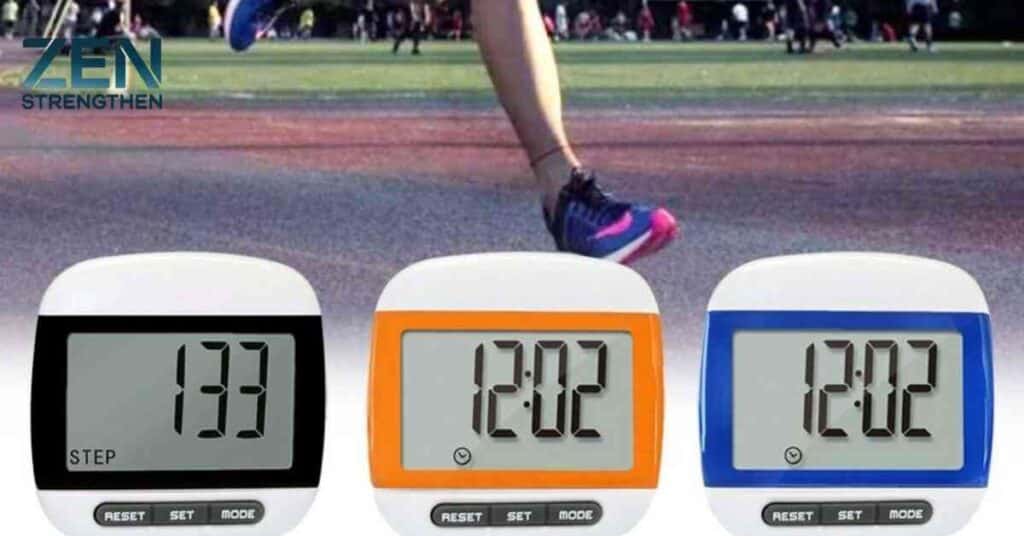In today’s health-conscious world, step counting has become a popular way to track physical activity and set fitness goals. Among the various benchmarks, the 15000 steps in km goal stands out as an ambitious yet achievable target for many.
But have you ever wondered just how far 15,000 steps can take you? Let’s lace up our shoes and embark on a journey to uncover the distance, benefits, and transformative power of this step count.
The Power of 15,000 Steps: More Than Just a Number
The growing popularity of step-counting isn’t just a fad—it’s a reflection of our collective desire to quantify and improve our health. With sedentary lifestyles becoming increasingly common, the simple act of walking has emerged as a powerful tool for maintaining and enhancing our well-being.
Why focus on 15,000 steps? This number represents a significant increase from the often-cited 10,000-step goal, pushing us to strive for greater physical activity. It’s a target that challenges us to move more, sit less, and reap the myriad benefits of an active lifestyle.
Breaking Down the Numbers: Miles in 15,000 Steps

So, how far is 15,000 steps in miles? The answer isn’t as straightforward as you might think. Several factors influence the distance covered by a specific step count.
Average Distance Covered
On average, 15,000 steps equate to approximately 6.5 to 7.5 miles. However, this can vary significantly based on individual factors.
Factors Affecting Step-to-Mile Conversion
- Stride length: The distance between your steps plays a crucial role. Taller individuals typically have longer strides, covering more ground with each step.
- Walking speed: Faster walking often leads to longer strides, increasing the distance covered per step.
- Terrain and incline: Walking uphill or on uneven surfaces can shorten your stride, while downhill walking might lengthen it.
To illustrate how these factors can affect distance, let’s look at a comparison table:
| Walker Type | Stride Length (inches) | Steps per Mile | Miles in 15,000 Steps |
| Short | 24 | 2,640 | 5.68 |
| Average | 30 | 2,112 | 7.10 |
| Tall | 36 | 1,760 | 8.52 |
Calculating Your Personal Step-to-Mile Ratio
To find your own step-to-mile ratio:
- Measure a known distance (e.g., a quarter-mile track).
- Count your steps as you walk this distance at your normal pace.
- Multiply your step count by 4 to get your steps per mile.
With this information, you can more accurately estimate the distance you cover in 15,000 steps.
Time Investment: Walking vs. Running 15,000 Steps
The time it takes to accumulate 15,000 steps varies depending on whether you’re walking or running, as well as your pace.
Average Time to Walk 15,000 Steps
For the average person walking at a moderate pace of 3-4 mph:
- It takes approximately 2 to 2.5 hours to walk 15,000 steps.
This time can be spread throughout the day or completed in a single session, depending on your schedule and fitness level.
Running 15,000 Steps: A Different Ballgame
If you’re a runner, you’ll cover the same number of steps much quicker:
- At a jogging pace of 5-6 mph, you could complete 15,000 steps in about 75-90 minutes.
- For experienced runners at 7-8 mph, it might take only 60-70 minutes.
Comparing Calorie Burn: Walking vs. Running

While running completes the step count faster, walking has its own benefits. Let’s compare the calorie burn:
| Activity | Time to 15,000 Steps | Approx. Calories Burned (160 lb person) |
| Walking (3.5 mph) | 2.5 hours | 850-900 calories |
| Jogging (5 mph) | 1.5 hours | 1,000-1,100 calories |
| Running (7 mph) | 1 hour | 950-1,000 calories |
Note: Calorie burn varies based on individual factors like weight, metabolism, and fitness level.
15,000 Steps in Context: Is It Really a Lot?
In our increasingly sedentary world, 15,000 steps might seem like a mountain to climb. But let’s put it into perspective:
Comparing to Daily Recommended Step Counts
- The oft-cited 10,000 steps goal originated from a Japanese marketing campaign, not scientific research.
- Recent studies suggest health benefits can be seen at lower step counts, with 7,000-8,000 steps showing significant improvements.
- 15,000 steps represents an ambitious goal that can lead to even greater health benefits.
Historical Perspective on Human Movement
Our ancestors likely moved much more than we do today:
- Hunter-gatherer societies often covered 6-10 miles daily in search of food and resources.
- In agrarian societies, farmers could easily log 15,000-20,000 steps during busy seasons.
15,000 Steps in Different Professions and Lifestyles
Some professions naturally lend themselves to high step counts:
- Mail carriers often log 15,000+ steps daily
- Waitstaff in busy restaurants can easily exceed this number
- Construction workers and retail workers in large stores frequently hit high step counts
For office workers or those with sedentary jobs, reaching 15,000 steps requires more intentional effort but is still achievable with dedication.
Health Benefits of a 15,000-Step Day
Committing to 15,000 steps daily can lead to a cascade of positive health outcomes:
Cardiovascular Improvements
- Reduced risk of heart disease and stroke
- Lower blood pressure
- Improved cholesterol levels
A study published in the Journal of the “American Heart Association” found that individuals who increased their step count from 4,000 to 8,000 steps daily reduced their risk of cardiovascular disease by 30%. Imagine the benefits of pushing to 15,000!
Weight Management and Metabolism Boost
- Increased calorie burn, supporting weight loss or maintenance
- Enhanced metabolic rate, even when resting
- Improved insulin sensitivity, reducing the risk of type 2 diabetes
Mental Health and Cognitive Benefits
- Reduced symptoms of anxiety and depression
- Improved mood and stress management
- Enhanced cognitive function and reduced risk of cognitive decline
A 2018 study in the Lancet “Psychiatry journal” found that regular exercise, including walking, was associated with 43% fewer “bad mental health days.”
Bone Density and Muscle Strength
- Increased bone density, reducing the risk of osteoporosis
- Improved muscle tone and strength, particularly in the lower body
- Enhanced balance and coordination, reducing fall risk in older adults
Strategies to Reach 15,000 Steps Daily

Hitting 15,000 steps might seem daunting, but with the right strategies, it’s an achievable goal:
- Start your day with a walk: Wake up 30 minutes earlier and start with a brisk walk.
- Take the stairs: Skip the elevator and climb stairs whenever possible.
- Walking meetings: Suggest walking meetings for one-on-one discussions.
- Active commuting: Walk part or all of your commute if possible.
- Lunchtime strolls: Use your lunch break for a refreshing walk.
- Post-dinner walks: Make an evening walk a family tradition.
- Housework hustle: Turn chores into a step-boosting activity.
- Commercial break laps: Walk around during TV ad breaks.
Pro Tip: Break your goal into smaller chunks. Aim for 5,000 steps in the morning, afternoon, and evening.
Making Every Step Count: Maximizing Your Walking Routine
To get the most out of your 15000 steps in km, focus on quality as well as quantity:
Proper Walking Form and Posture
- Keep your head up and eyes forward
- Engage your core and swing your arms naturally
- Land on your heel and roll through to your toes
Interval Training While Walking
Boost your cardiovascular fitness with interval training:
- Walk at a comfortable pace for 5 minutes
- Speed up to a brisk pace for 1 minute
- Return to your comfortable pace for 2 minutes
- Repeat this cycle throughout your walk
Incorporating Strength Exercises
Add these exercises every 1,000 steps:
- 10 bodyweight squats
- 10 lunges (each leg)
- 10 calf raises
Mindful Walking Techniques
Practice mindfulness during your walks:
- Focus on your breath
- Notice the sensations in your body
- Observe your surroundings without judgment
This can turn your daily steps into a form of moving meditation, enhancing both physical and mental well-being.
Tech Tools: Tracking Your 15,000-Step Journey
In our digital age, numerous tools can help you track and achieve your step goals:
Popular Fitness Trackers and Apps
| Device/App | Pros | Cons | Price Range |
| Fitbit Charge 5 | Accurate step counting, sleep tracking, GPS | Requires subscription for advanced features | $120-$150 |
| Apple Watch Series 7 | Comprehensive health tracking, ECG function | Expensive, short battery life | $350-$450 |
| Garmin Vivoactive 4 | Long battery life, stress tracking | Bulky design | $200-$300 |
| Google Fit (App) | Free, works with most smartphones | Less accurate than dedicated devices | Free |
| Strava (App) | Great for runners and cyclists, social features | Some features require subscription | Free (basic) |
Using GPS for Accurate Distance Measurement
Many smartphones and fitness trackers now include GPS functionality, allowing for more precise distance tracking. This is particularly useful for outdoor activities and can help you calibrate your step count to distance ratio.
Syncing Data with Health Platforms
Most modern fitness trackers can sync with comprehensive health platforms like Apple Health, Google Fit, or Fitbit. This integration allows you to view your step data alongside other health metrics, providing a more holistic view of your fitness journey.
Overcoming Challenges: When 15,000 Steps Seem Impossible

Even with the best intentions, life can sometimes get in the way of our step goals. Here are some strategies to overcome common obstacles:
Dealing with Time Constraints
- Break it up: Aim for three 20-minute walks throughout the day
- Multi-task: Walk while on phone calls or listening to audiobooks
- Prioritize: Schedule your walks like any other important appointment
Adapting for Different Fitness Levels
- Start small: Begin with a lower step goal and gradually increase
- Use a treadmill: Walk at a comfortable pace while watching TV
- Try water walking: Low-impact option for those with joint issues
Indoor Alternatives for Inclement Weather
- Mall walking: Many malls open early for walkers
- Indoor tracks: Check local community centers or gyms
- Home workouts: Follow along with walking workout videos online
Staying Motivated: Building a Step Streak
- Join a challenge: Many fitness apps offer step challenges
- Reward yourself: Set milestones and celebrate achievements
- Find a walking buddy: Accountability can boost motivation
Remember: Consistency is key. It’s better to hit 10,000 steps regularly than to burn out trying for 15,000.
Beyond Steps: Holistic Approach to Health
While 15,000 steps is an excellent goal, it’s important to view it as part of a broader health strategy:
Balancing Step Goals with Other Forms of Exercise
- Strength training: Aim for 2-3 sessions per week to complement your walking
- Flexibility work: Incorporate stretching or yoga to maintain mobility
- High-intensity intervals: Add short bursts of intense activity for cardiovascular benefits
Nutrition Considerations for High-Step Days
- Hydration: Increase water intake to match your activity level
- Balanced meals: Focus on lean proteins, complex carbs, and healthy fats
- Snack smart: Choose nutrient-dense options to fuel your walks
Rest and Recovery: The Importance of Rest Days
- Listen to your body: Take rest days when needed
- Active recovery: Light stretching or gentle yoga on off days
- Quality sleep: Prioritize 7-9 hours of sleep for optimal recovery
Real-Life Success Stories: 15,000 Steps Transformations
Let’s look at some inspiring examples of individuals who have embraced the 15,000-step lifestyle:
Case Study 1: Sarah’s Weight Loss Journey
Sarah, a “42-year-old“office worker, started with a goal of 5,000 steps daily. Over six months, she gradually increased to 15,000 steps:
- Initial weight: 200 lbs
- After 6 months: 175 lbs
- Other benefits: Reduced blood pressure, improved sleep quality
Sarah says: “The key was consistency. Even on busy days, I found ways to sneak in extra steps. It’s become a lifestyle, not just a goal.”
Case Study 2: Tom’s Chronic Condition Management
Tom, “58,” used walking to manage his type 2 diabetes:
- Initial HbA1c: 7.8%
- After 3 months of 15000 steps in km daily: 6.5%
- Medication: Reduced insulin requirements
Tom’s doctor notes: “The improvement in Tom’s glucose control through increased physical activity is remarkable. It’s a testament to the power of consistent, moderate exercise.”
Case Study 3: Emma’s Mental Health Improvement
Emma, a “29-year-old” grad student, used walking to combat anxiety:
- Before: Relied heavily on anti-anxiety medication
- After 2 months of walking 15000 steps in km daily: Reduced medication dosage by half
- Additional benefits: Improved focus, better sleep patterns
Emma shares: “Walking became my moving meditation. It gave me time to process my thoughts and reduced my anxiety significantly.”
Conclusion
Embarking on a 15000 steps in km journey is more than just a physical challenge—it’s a commitment to your overall health and well-being. The benefits extend far beyond the miles you’ll cover, impacting every aspect of your life from physical fitness to mental clarity.
Remember, the path to 15000 steps in km doesn’t have to be walked alone. Engage friends, join community groups, or use technology to connect with like-minded individuals. Every step you take is a step towards a healthier, more vibrant you.
So, are you ready to take that first step? Your 15,000-step adventure awaits, promising improved health, increased energy, and a renewed zest for life. Start today, and discover just how far 15,000 steps can take you—not just in miles, but in transforming your life.
FAQ,s
Can I split my 15000 steps in km throughout the day?
Absolutely! In fact, spreading your steps throughout the day can be more beneficial than doing them all at once. It keeps you active throughout the day and helps combat the negative effects of prolonged sitting.
How does elevation affect step count and calorie burn?
Walking on an incline or climbing stairs can significantly increase calorie burn without necessarily increasing step count. You might take fewer steps overall due to shorter stride length, but the intensity of the workout increases.
Are there any risks to aiming for 15000 steps in km daily?
For most healthy adults, 15,000 steps is safe. However, if you have any pre-existing health conditions or are significantly increasing your activity level, it’s wise to consult with a healthcare professional first. Listen to your body and increase your step count gradually.
How do different surfaces impact step count accuracy?
Most modern fitness trackers use accelerometers that are fairly accurate across different surfaces. However, very soft surfaces like sand might result in slightly lower step counts, while running or walking on a treadmill might inflate step counts slightly.
Can I count other activities towards my step goal?
Many fitness trackers can convert activities like cycling or swimming into “step equivalents” based on intensity and duration. While these aren’t actual steps, they contribute to your overall activity level and can be a useful way to track diverse forms of exercise.
Disclaimer
“This article ” is intended for general informational purposes only and does not address individual circumstances. It is not a substitute for professional advice or help and should not be relied on to make decisions of any kind. Any action you take upon the information presented in this article is strictly at your own risk and responsibility!

Jhon Wick is a seasoned writer in the fitness niche, dedicated to sharing expert advice and the latest trends. With a passion for health and wellness, Jhon offers practical tips and inspiration to help readers achieve their fitness goals and stay motivated.







